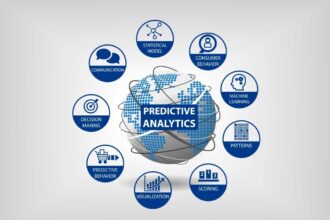 If it seems like ages ago that you began using descriptive analytics, and you’ve already mastered the data mining, pattern recognition, forecasting and predictive modeling of predictive analytic
If it seems like ages ago that you began using descriptive analytics, and you’ve already mastered the data mining, pattern recognition, forecasting and predictive modeling of predictive analytic
 If it seems like ages ago that you began using descriptive analytics, and you’ve already mastered the data mining, pattern recognition, forecasting and predictive modeling of predictive analytics, then it’s probably time for you to move to something more complex that delivers an even greater business impact. According to “Analytics Journey” from Analytics Magazine, that next step is called prescriptive analytics.
If it seems like ages ago that you began using descriptive analytics, and you’ve already mastered the data mining, pattern recognition, forecasting and predictive modeling of predictive analytics, then it’s probably time for you to move to something more complex that delivers an even greater business impact. According to “Analytics Journey” from Analytics Magazine, that next step is called prescriptive analytics.
While predictive analytics helps you model and forecast what might happen in the future, prescriptive analytics helps you decide the best course of action to take given your objectives, requirements and constraints. It seeks to find the optimal solution given a variety of choices, alternatives and influences that might affect the outcome. An even more advanced area of prescriptive analytics uses stochastic optimization to also take into consideration the uncertainty that might exist in the data used in the analysis.
Prescriptive analytics is possible today because of the improvements we’ve made to the speed and memory size of computers. It’s a processing-intensive task that analyzes potential decisions, the interactions between those decisions, the factors and constraints on each decision and the ultimate business outcome of each scenario to arrive at an optimal solution.
The combination of predictive and prescriptive analytics can help you achieve both efficiency and effectiveness. For example, predictive analytics might help you understand the drivers behind customer buying patterns to anticipate the products customers want. Prescriptive analytics can help you optimize scheduling, production, inventory and supply chain design to deliver what they want in the most optimized way.
If you’re waiting until you have a complete and fully-defined data warehouse in place before you explore advanced analytics, then you might be waiting too long. Often, as you go through the process of applying advanced analytics to key business challenges, you’ll identify critical inputs that need to be in place. You may also discover new questions that can be answered that you hadn’t even thought of, both of which might impact the design of data warehouses and information management systems.
To learn how Predictive Analytics can help your company quickly and easily gain insight from data, check out our complimentary webcast “Predictive Analytics with Spotfire”.
Steve McDonnell
Spotfire Blogging Team






